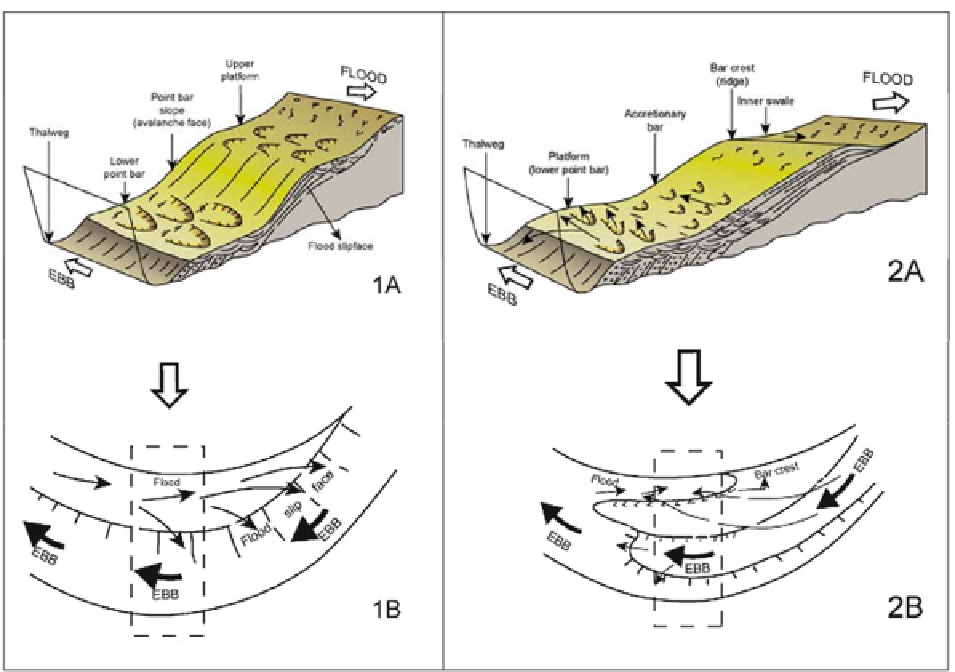Geology Reference
In-Depth Information
Fig. 18.23
Two models (
1
model 1, and
2
model 2) for tide-
infl uenced fl uvial point-bars with current reversals developed for
the Castigaleu Fm and Capella Fm highlighting the segregation
of fl ood- and ebb-current generated structures around the
meander bend. (
a
) perspective view, and (
b
) plan view (modifi ed
after Cuevas Gozalo and de Boer
1991
)
18.5.3 Heterolithic Tidal Lagoon Deposits
complex is wave dominated but the overlying Grustán
barrier complex is a mixed-energy system with tidal
(inlet) channels (Donselaar
1996a
) .
The tidally-infl uenced and tidally-dominated environ-
ments in third order sequence 1 of the Pano Fm
(Fig.
18.25
) are formed as part of a retrogradational
fourth order sequence set of a N-S to NE-SW oriented
barrier and back-barrier complex succession with a
shoestring geometry (Pano, Panillo and Grustán barrier
chains respectively; Figs.
18.26
and
18.27
; Donselaar
1996a
). Each of these is associated with tidal inlets and
back-barrier lagoons including tidal channels. Their
formation was attributed to eustatic sea-level rise and
coeval (punctuated) basin fl oor subsidence. In particu-
lar, sedimentation of the Pano coastal barrier complex
was strongly infl uenced by tidal action as witnessed by
the tidal channels, fl ood-tidal delta deposits and overall
bimodal currents directions. Cross-stratifi ed sets con-
tain mud drapes on foresets, sigmoidal laminae shapes
and convex-up reactivation surfaces. The Panillo barrier
The tidally-infl uenced environments of third order
sequence 2 (Fig.
18.25
) are formed by a retrogradational
succession (parasequence set) formed by a tidally-
infl uenced embayment fi ll at the base and ensuing
transgressive, up to 35 m thick fl ood-tidal delta deposits
overlain by highstand carbonate deposits (Donselaar
1996a
). Time-equivalent barrier and/or inlet deposits
are not reported and are assumed absent in the studied
area or not preserved. The lowermost parasequence is
located in the tidally-infl uenced (restricted) embay-
ment and is formed by heterolithic (mud and very fi ne
sand) deposits with double mud drapes at the base and
neap-spring cyclicity (fourth order sequence 2.1;
Fig.
18.28
) forming an aggradational cyclic succession
(Donselaar
1996a,
b
). The top part of the heterolithic
succession forms the transition into the toe of the

